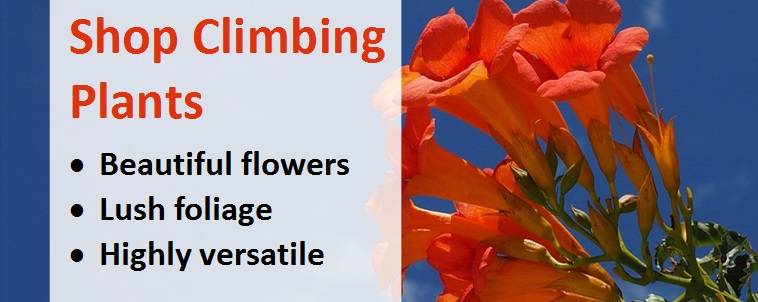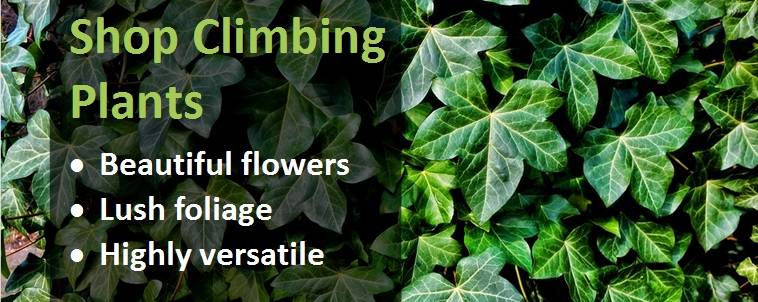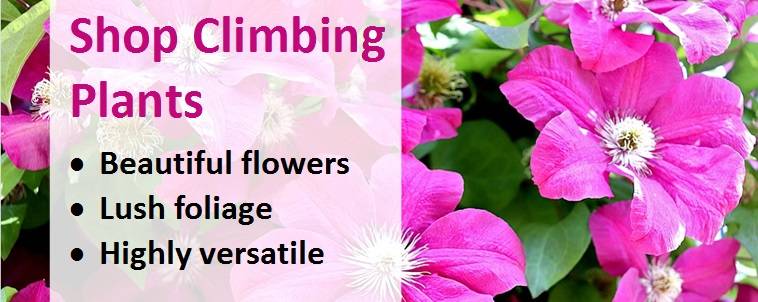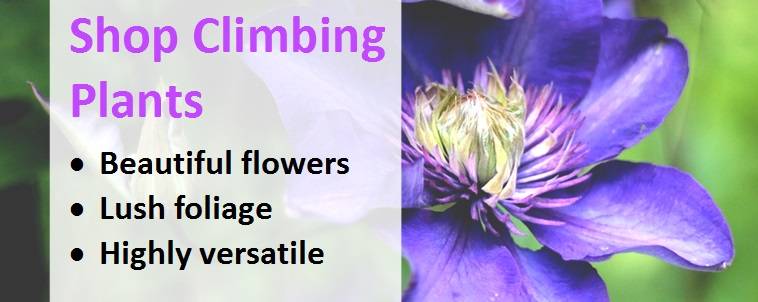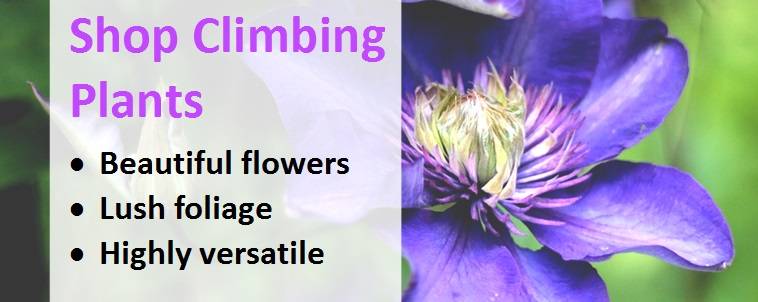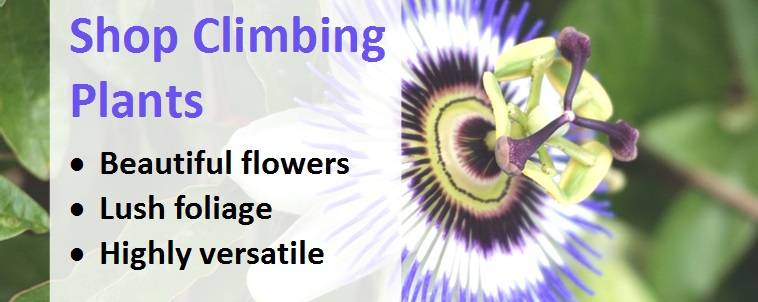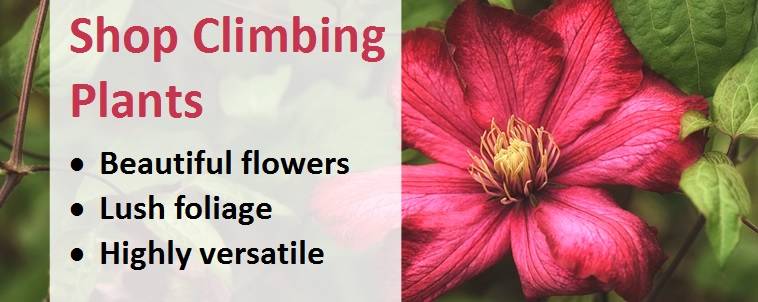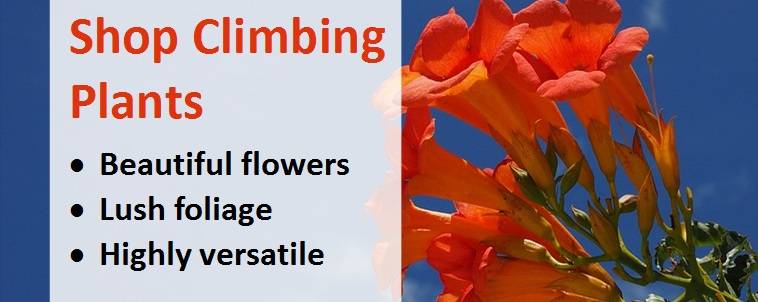How to plant, grow and care for climbing plants
Climbers are highly versatile plants producing beautiful flowers and lush foliage with a natural tendency to climb, scramble or ramble. They're perfect for covering unsightly walls and fences; adding height and colour when grown through arches or pergolas; clambering through mature shrubs or trees to add an extra season of interest; or just making efficient use of floor space in smaller gardens and balconies. Some climbers twine around their supporting framework, whereas others such as Hedera and Campsis actually self-cling to the climbing surface. Many climbers are also excellent wildlife attracting plants, whilst Hedera varieties such as Hedera Hibernica are perfect groundcover plants and Hedera Helix is suitable for growing in a container.
Choosing a climbing plant
1) Climbing Habit - Self Clinging vs. Twining Climbers vs. Wall Shrubs
-
There are two main types of true climbing plants - self-clinging and twining varieties.
- Self-clinging climbers naturally adhere to the climbing surface using aerial roots or adhesive pads. Ivy (Hedera), Hydrangea Petiolaris and Campsis have aerial roots, whilst varieties such as Virginia Creeper bear adhesive pads along the stems. These climbers will cling to walls or woodwork without the need for a full support structure such as wires or a trellis.
- Twining climbers such as Honeysuckle, Clematis, Jasmine and Wisteria grow by wrapping themselves around poles, wires or trellis. They need a framework to wind around and climb up.
- Some bushes can also be trained as 'wall shrubs' to achieve the same effect but they will need to be tied into a support and trained upwards.
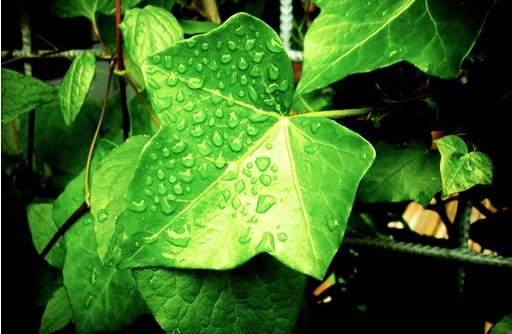
2) Aspect
-
If you're growing a climber against a wall or fence, establish whether it is north, south, east or west facing. This will dictate how much sunlight your plant will receive and whether it's likely to be warmer or cooler.
-
The sun rises in the east and sets in the west, meaning north facing walls receive the least sun, making them cooler, shaded places. This generally represents less than ideal growing conditions but there are still plenty of climbers that are suitable - see below.
-
East facing walls will receive some sunlight in the morning as the sun rises but will then be cast into shadow for the afternoon. The early morning sun can cause damage to frozen buds and leaves, as the rapid thawing causes them to turn brown and wither, with evergreens being particularly vulnerable.
-
South and west-facing walls receive sunlight throughout the day, making them warmer and brighter. South-facing walls in particular absorb the sun's heat throughout the day, emitting it through the night, making south-facing sites perfect for less hardy climbers and wall shrubs. Fruit trees can also be trained as espaliers, cordons or fans against a south-facing wall to act as a fruiting climber and save space in the fruit and veg garden.

3) Size and Hardiness
-
Look for climbing plants with an eventual height and spread not too dissimilar to the space you have available. Be particularly wary of using large-growing, vigorous varieties in smaller spaces or growing them through mature shrubs or trees that may not be sufficiently strong to hold their weight when fully grown.
-
Avoid planting tender climbers in more exposed situations.

Recommended Climbing plants for north and east-facing walls
|
|
Flowering Period |
Extra Features |
|
|
|
|
|
|
|
|
|
|
|
|
|
|
|
|
|
|
|
|
|
|
|
|
|
|
|
|
|
|
|
|
|
|
|
|
|
|
|
|
|
|
|
|
|
|
|
|
|
|
|
|
|
|
|
|
|
|
|
|
|
|
|
Recommended Climbing plants for south and west-facing walls
|
|
Flowering Period |
Extra Features |
|
|
|
|
|
|
|
|
|
|
|
|
|
|
|
|
|
|
|
|
|
|
|
|
|
|
|
|
|
|
|
|
|
|
|
|
|
|
|
|
|
|
|
|
|
|
|
|
|
|
|
|
|
|
|
|
|
|
|
|
|
|
|
|
|
|
|
|
|
|
|
|
|
|
|
|
|
|
|
|
|
|
|
|
|
|
|
|
|
|
|
Key
 = Spring
= Spring
 = Summer
= Summer
 = Winter
= Winter
 = Scented
= Scented
 = Evergreen
= Evergreen
 = Attractive foliage
= Attractive foliage
 = Colourful berries or fruit
= Colourful berries or fruit
 = Autumn flowering or foliage colour
= Autumn flowering or foliage colour
 = Architectural
= Architectural
Securing a framework for your climber
Unless your climber is self-clinging, you'll need to install a framework for it to twine around prior to planting. Whatever structure you choose, it should be strong and secure as mature climbing plants become heavy with age. Some of the best options are:
1) Installing a series of horizontal wires secured about 5cm (2 inches) away from a wall or fence, with the first wire 30cm (1 feet) above ground level and with subsequent wires at intervals of 30-45cm (1-1.5 feet).
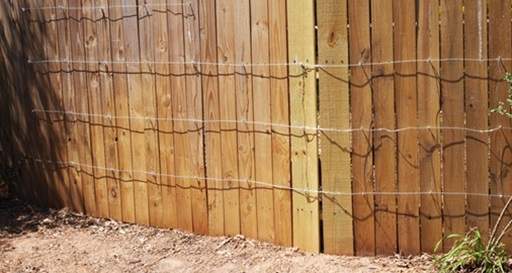
2) Installing a trellis to grow your climbers through. A trellis is an architectural structure made of an open framework or lattice of interwoven or intersecting pieces of wood, bamboo or sometimes metal used to support and display climbing plants.
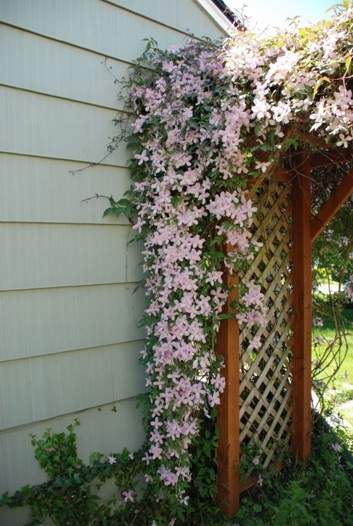
3) Grow your climber through an obelisk. Small obelisks can just be pushed into the soil, whilst larger ones may need to be anchored into the ground with a concrete footing.

4) Growing your climbers up through a mature plant. Growing climbers through a host is an excellent way to get more from the same space, particularly as you can time each plant's display so one comes after the other, prolonging the interest. For example, a spring-flowering clematis would partner well with a crab apple in its blossoming prime.
When to plant
-
Container grown climbers can be planted at any time of the year, providing the ground is not frozen or waterlogged and it's not excessively windy.
-
If you're able to choose, autumn is best as the soil is still warm enough to encourage some root growth before winter sets in.
-
If you have an exposed garden and are looking to grow a climber in a container, plant in late spring so your plants have the full summer to become established before the colder weather.
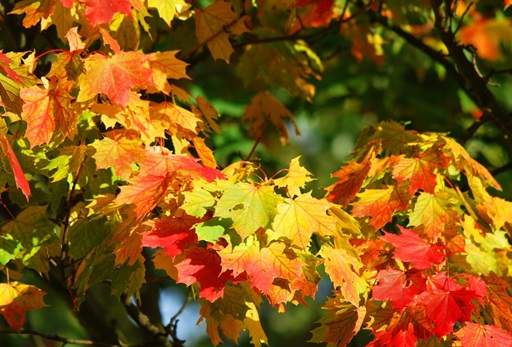
Autumn is the best time to plant your climbers if you have the choice
Planting
-
Water your climber well before planting and allow the excess water to drain away.
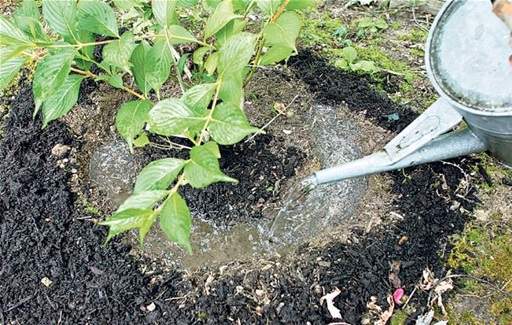
-
Plant 30-45cm (1-1.5 feet) away from the base of the wall or fence to allow rainwater to reach the roots and allow space for root development.
-
Dig your planting hole twice as wide and 1.5 times the depth of the rootball. If you have a heavy clay soil, break up the sides and bottom of the hole by gently pricking the smeared surfaces with a fork - this will allow the roots to grow into the surrounding soil.
-
Mix the backfill soil with plenty of well-rotted organic matter such as manure or compost and leave it to one side. This is particularly important when planting south or west facing sites as the longer exposure to the sun will dry out the ground more quickly.
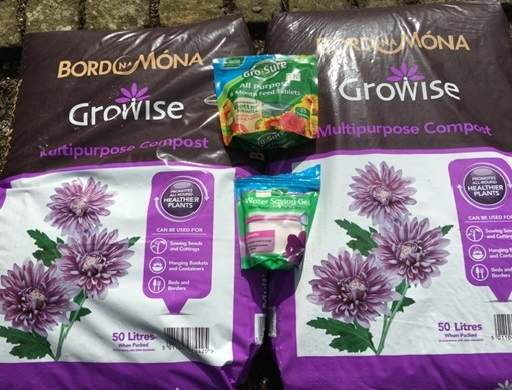
-
Gently remove your plant from its container and tease out any congested roots at the base so they grow away from the rootball and into the surrounding soil.
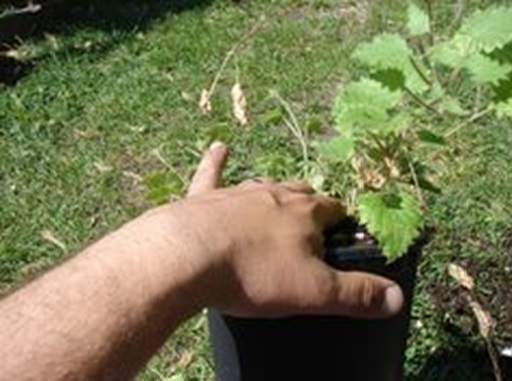
-
Position at the centre of the planting hole and check the depth using a cane laid across the planting hole. Virtually all climbers should be planted at the same depth as they were in the pot with the top of the rootball in line with the soil level. If the climber is standing too high you'll need to remove some of the soil in the bottom of the hole, or if it's too low then top it up a bit.
-
The exception is Clematis which prefer to be planted 6cm (2.5 inches) below the soil surface. This helps protect the base of the stems underground if the dreaded clematis wilt disease attacks. Although affected clematis will dieback to ground level, there is a good chance that they will re-sprout from underground buds at the base of the stems, effectively saving the plant.
-
When planting, position your climber in the centre of the hole and lean it at a 45 degree angle towards the bottom of the support, before backfilling with your planting mix.
-
Carefully firm down the ground around your plant to eliminate air pockets, water thoroughly, then mulch with bark, pebbles or decorative stone to preserve moisture and suppress weeds.
Initial Training
-
All climbers will need some training initially.
-
Most climbers will be supplied in a pot secured to a bamboo cane with plastic ties. Remove these ties using scissors and untwine the plant from the cane sufficiently to allow its stems to spread out.
-
If you're using wire supports, slip the top of the cane under the first wire to hold it in place. If your climber is multi-stemmed from the base you can install a framework of three canes in a fan shape, again slipping the top of each one under the wires to hold them in place, and training a stem up each cane.
-
Tie the canes and shoots to your wire supports using soft garden twine, cutting off any excess.
-
Finally, prune any weak of leggy stems not being used for the main framework back to ground level.
-
If you're growing your climber through a trellis, obelisk, pergola or any other structure, follow the same principles - help your climber to reach the supports using canes if required, and tie in the steps using soft garden twine.
Ongoing Training and Garden Care
-
Tie new growth in with soft garden twine regularly, and extend the canes when required. It's easiest to secure the twine to your wires or supporting structure first, then tie in the stems of your climber second.
-
If your climber has weak, spindly stems we recommend reducing the main stem by one-third to promote more vigour and encourage it to bush out.
-
As you're climber grows taller you can extend the training fan shape with taller canes and nip off any untidy growth with a pair of secateurs.
-
Once your plant has formed thicker, woody, self-supporting stems, the canes can be removed.
-
Keep well watered for the first few months after planting to ensure your climbers don't dry out and protect tender climbers with several layers of horticultural fleece when frost is forecast.
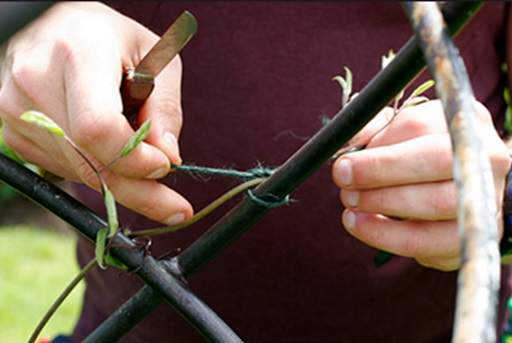
Share this page:


